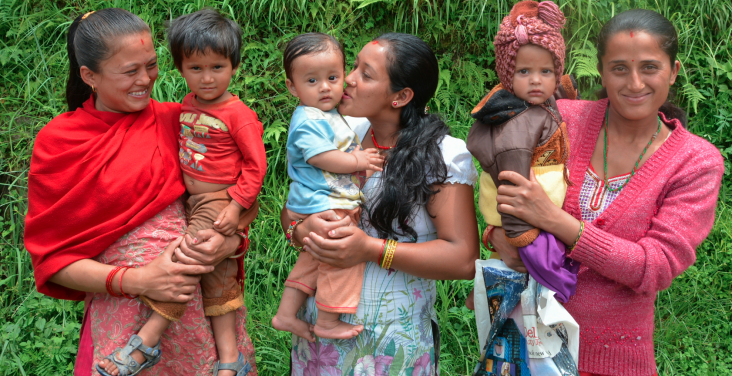
When we began formulating USAID’s strategic approach to nutrition and development two years ago, we knew it had to be multi-sectoral if we wanted to achieve the Agency’s goals of reducing hunger and improving nutrition around the world. This collaboration between the nutrition and water, sanitation and hygiene (WASH) sectors is an excellent example of the necessity of collaboration to bring about greater change.
The link between WASH and undernutrition is strong and clear. Diarrhea – from exposure to fecal material in the environment – reduces a child’s appetite as well as the ability to absorb nutrients that he or she consumes. Repeated bouts or chronic diarrhea in children make it very difficult for them to “catch up” on the growth that was lost during the period of illness. Undernutrition, in turn, weakens a child’s immune system, making him or her even more susceptible to illness, and increasing both the frequency and duration of a bout of diarrhea. Diarrhea is estimated to cause 760,000 deaths among children under 5 each year.
When children do not experience optimal growth, particularly during the first 1,000 days of life, it has long-term effects on the development of their brains and bodies. Stunting is the outcome of chronic nutritional deficiency, and stunting is associated not only with an increase in a child’s risk of dying, but it is also associated with poorer cognitive and social development, and reduced capacity for learning and earning later in life. Stunted children also have weaker immune systems and are significantly more likely to die if they develop diarrhea.
In May, USAID released the 2014-2025 Multi-Sectoral Nutrition Strategy, which maps out an integrated Agency approach to global nutrition and the fight against malnutrition. Key to this effort was bringing together the diaspora of experts in various Agency sectors – maternal and child health, family planning, HIV/AIDS, gender, agriculture, water, environment, and humanitarian assistance – to create a collective vision and opportunities for programming across sectors.
Our new strategy takes aim at childhood malnutrition and stunting, setting the goal to reduce the number of stunted children worldwide by a minimum of 2 million over five years.
It is clear that food alone isn’t going to solve the problem. The nutritional benefits of increased access to food, better diets, or improved care practices can be easily hampered by poor WASH practices. A recent review of data from 116 countries suggests that up to 35 percent of the difference in stunting across these countries is explained by a combination of safe water access and improved sanitation. Safe drinking water, proper sanitation, and hygiene are imperative if we are going to prevent undernutrition and stunting in children.
Our Multi-Sectoral Nutrition Strategy and our Water and Development Strategy both stress the importance of preventing waterborne diseases that threaten nutrition, particularly in young children. Both of these Agency strategies focus on integrating hygiene actions such as safe drinking water, handwashing with soap, safe disposal of feces, and food hygiene into nutrition programs.
Under the new Nutrition Strategy, WASH is defined as a high impact activity in light of its critical relationship to childhood nutrition. We encourage nutrition programs to work to increase access to and use of safe water supply, sanitation, and essential commodities to facilitate improved hygiene practices. We urge these programs to adopt an integrated approach that jointly promotes essential WASH and nutrition actions in community and facility-based nutrition assessments, counseling, and education. In addition, we champion the development of multiple use water systems that provide water for both domestic uses such as water for drinking, cooking, and washing up and productive uses like growing crops and feeding livestock, in order to simultaneously boost health, generate income, and feed children. At the same time, as the evidence points to an association between WASH and improved nutrition, more investments must be made to continue research in this area, building the evidence base so that we can fully understand these relationships.
WASH and nutrition are closely intertwined, and both are critical to the survival and growth of children. The coordination of these Strategies and the opportunity they provide for holistic, integrated programming is promising. It is our hope that this multi-sectoral approach will surpass what individual programs alone can do and will improve the nutrition and health of children around the world.
Anne M. Peniston is the Chief of the Nutrition Division at USAID. She has worked in U.S. and international public health for more than 30 years as a clinician, researcher, and program manager.







Comment
Make a general inquiry or suggest an improvement.